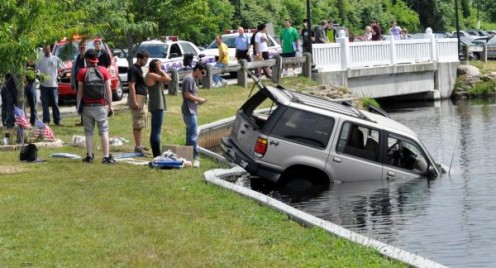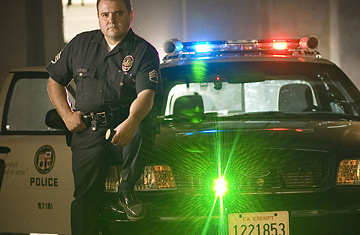Police: Break Off the Chase (for Safety Sake!)
Out of Control Cars Mean Danger

Must Police Risk Lives in Car Chases?

Everyone makes mistakes, that's a given. But most of us, no doubt, were told by some long forgotten grammar school teacher that it's all right to make a mistake; just don't repeat it. Learn from your mistakes.
That's good advice, true; but not so easy to follow.
Personally, I've been known to play at the game of golf on occasion, and the more I play the more I realize how difficult it is not to repeat mistakes.
Apply the Correct Principles
In theory, when your ball slices out of the county or hooks into those trees on the left, you simply analyze the cause, apply the correct principles and come up with the cure for the malady forthwith. It's important to do this without throwing -- or breaking -- the club you have in your hand.
While sending a golf ball off in the wrong direction can be a shattering experience to a dedicated hacker, it rarely is life threatening, which brings me, finally, to the point.
Early this month in Westport, a policeman was conducting a radar operation when he observed a speeding car and chased after it. The chase ended when the police cruiser and a school bus loaded with children crashed head-on. Fortunately, there were no injuries.
This incident aside, it seems police departments across the country have conducted high-speed chases through crowded streets often enough to know that the threat to unwitting, innocent bystanders is too great to ignore.
Repeating the Same Mistakes
Alas, this mistake has been made before, many times over. But, despite the fact that it has been a controversial subject inside and outside of police departments, the same mistake occurs again and again.
To their credit, some police departments have established detailed policies covering high-speed chases of suspects in an effort to avoid the often undesirable and sometimes fatal consequences.
Often police could avoid the hazards of the chase by taking note of the registration number of the vehicle and pertinent information concerning its description as well as information on the occupant or occupants. On some occasions police could keep tabs on the vehicle by way of radio communications with other cruisers and the department.
Escalating the Risk
Known dangerous criminals being chased by police are likely to be far more preoccupied with their escape than with the safety of bystanders. As the following police cruiser picks up speed, it is a virtual certainty that the escapers will increase their speed -- and the potential danger to innocent bystanders.
Ordinary citizens who may be going some miles-per-hour faster than the posted speed limit, or who may inadvertently pass a red traffic light, might well respond to the flashing red lights in their rear view mirror by panicking, compounding an already dangerous situation.
Critical Decision
Police, of course, must make a judgment when faced with an immediate crisis: Break off the chase, take a chance that the criminal might escape or press on. In any high-speed chase, both the policeman and the suspect represent a clear and present danger to anyone or anything in their path.
We can only hope that, faced with such a decision, the officer, or officers -- who must know that their on-the-spot judgment has the backing of both department policy and the department brass -- will keep innocent bystanders in mind.
I wrote this column as an "Editor's Notebook" for The Hour newspaper of Norwalk, Conn., on Feb. 8, 1992.








